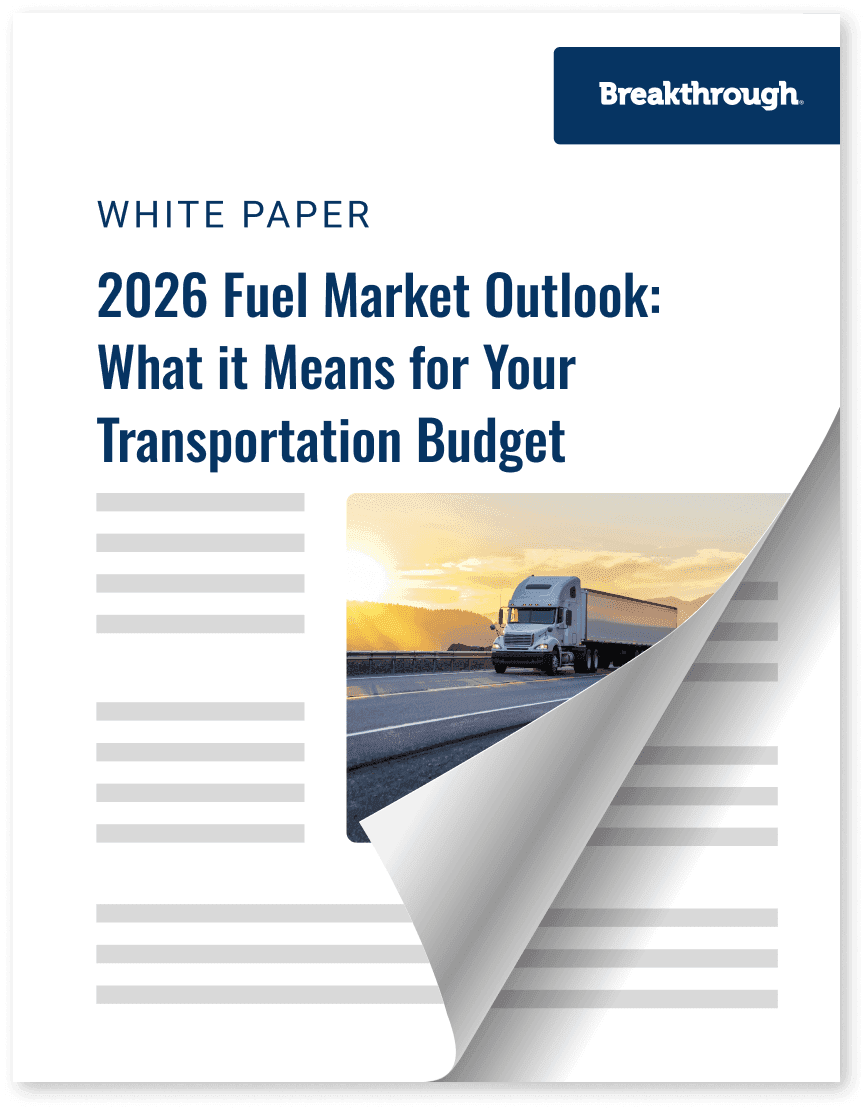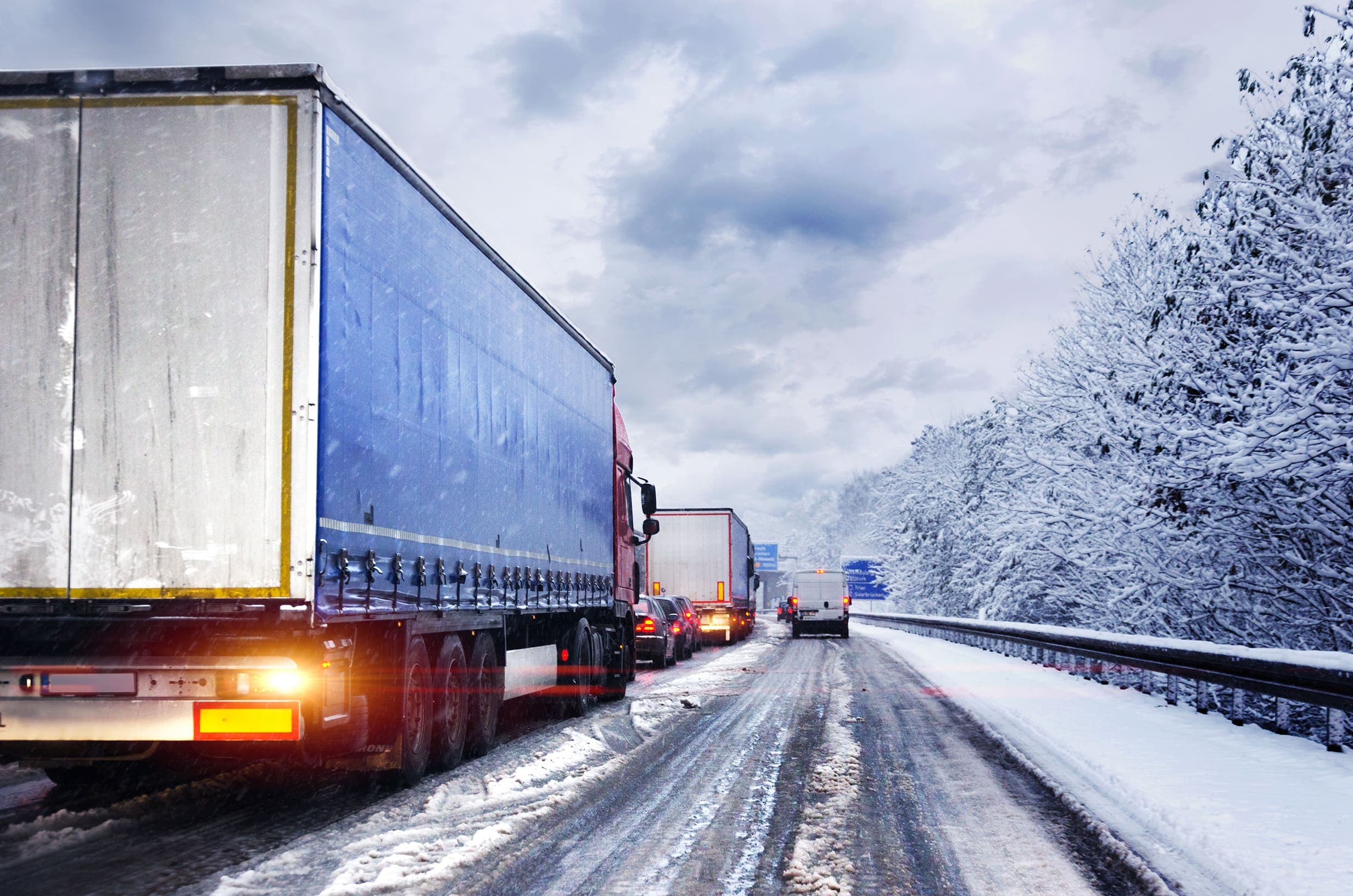2026 Fuel Market Outlook: What it Means for Your Transportation Budget

Trending
Top Posts
4 min read
July 17, 2025

Share:
Table of contents
Browse the table of contents to jump straight to the part you’re looking for
The transportation sector is a vital part of the global economy. As one of the largest contributors to greenhouse gas emissions, accounting for about 28% of total U.S. greenhouse gas (GHG) emissions, shippers have a significant opportunity to make progress on their emissions reduction goals.
By focusing on transportation as a strategic unlock, shippers can play a pivotal role in advancing sustainability efforts while maintaining the efficiency and reliability of their operations. Shippers can use innovative solutions to take meaningful steps to reduce transportation emissions, streamline their supply chains, and contribute to a more sustainable future.
Start by partnering with low-emission carriers who prioritize sustainable practices by operating fuel-efficient fleets and offer transparent reporting of their emissions data. US EPA’s SmartWay program evaluates carriers on over 50 metrics, including fuel efficiency, emissions, and operational practices. Each carrier rank connects efficiency to emissions. Based on Breakthrough’s shipper client data, each rank improvement in SmartWay scores can lead to an average 6% reduction in carrier emissions.
While most carriers don’t report their actual emissions data, shippers can track load-level emissions based on fuel consumption through Fuel Recovery. This gives insight into emissions hot spots to prioritize emissions reduction initiatives.
By leveraging route and load optimization tools, shippers can reduce miles traveled, lower fuel and freight costs, and cut emissions. For example, a Modern Beverage Company achieved remarkable results by optimizing over 5,500 loads and eliminating 130+ lanes. This saved the company over $10M by identifying network synergies, driving transparency, and advancing their corporate sustainability goals. The use of cutting-edge AI technology can quickly identify these opportunities, increasing efficiency and decreasing costs with proactive freight management.
Aligning fuel efficiency to a carrier’s actual operating performance is a good practice and a significant way to cut emissions and lower costs. Fuel efficiency benchmarks vary by industry. For example, carriers shipping durable goods achieved a maximum MPG of 7.8, while carriers shipping food and beverages averaged closer to 6.7 MPG. In 2025, shippers who partner with Breakthrough contracted with carriers that operated tractors with an average age of 4.24 years, compared to the industry standard of 8.65 years. Newer trucks are more fuel-efficient due to advances in technology and design. These differences highlight the importance of setting realistic, industry-specific targets when evaluating carrier performance. By properly accounting for fuel consumption, shippers can use fuel efficiency as an opportunity.
Switching to alternative energy vehicles is one of the most effective ways to reduce transportation emissions. Heavy-duty electric vehicles (HDEVs), for instance, emit zero tailpipe emissions and reduce overall lifecycle emissions when powered by renewable energy sources. Other alternative fuels, such as biodiesel and renewable diesel, can be incorporated into existing fleets to lower emissions by over 50% compared to traditional diesel fuel and reduce significant upfront costs.
Renewable Natural Gas (RNG) is another impactful alternative that offers significant sustainable benefits. Depending on the feedstock, RNG can reduce lifecycle greenhouse gas (GHG) emissions by up to 151%, making it a carbon-negative solution in some cases.
Reducing emissions can also involve optimizing the mode of transportation used to move freight. Mode optimization involves reassessing the use of trucks, rail, ships, or air freight to determine which options are the most sustainable for specific lanes. For example, intermodal conversion, or shifting freight from road to rail, can achieve a 50-70% reduction in emissions and a 5-25% reduction in costs.
Using insights from lane-level data and the broader transportation industry, shippers can prioritize lower-emission transport modes, such as rail over road or ships over planes, for applicable freight routes without sacrificing service levels.
There are several ways to minimize transportation emissions without disrupting performance or adding complexity to daily operations. For shippers wanting to take action without the complexity of convincing leadership to invest in sustainable practices, partnering with solutions like CleanMile allows small, stackable improvements in sustainability efforts.
CleanMile
Learn more about our effective sustainability solutions.


6 min read
November 20, 2025
Understand the impact of Ukrainian drone strikes on Russian refineries. Learn why diesel prices are volatile and how to protect your budget from market shocks.
Read more
7 min read
November 11, 2025
Discover how fuel management systems cut costs, track emissions, and improve reimbursement accuracy for modern freight operations.
Read more
6 min read
November 10, 2025
Explore how the proposed Union Pacific–Norfolk Southern merger could reshape rail in the U.S. Learn impacts on competition, pricing, and service.
Read more